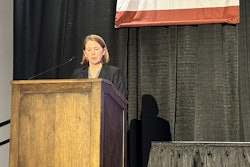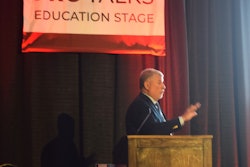It's now a rule of the road, so to speak -- the Department of Labor's six-factor independent contractor test for contractor/employee determinations under the Fair Labor Standards Act went into effect March 11, noted transportation attorney Greg Feary of the Scopelitus firm. Feary was speaking Monday to attendees of the Truckload Carriers Association's conference in Nashville, Tennessee, where he dispelled notions proffered by some that the DOL's new test represented California's AB 5 and its very problematic ABC test's arrival in Washington, D.C.
This isn't DOL "taking our jobs away," he said, paraphrasing language heard from some owner-operators leased to motor carriers, a sentiment also expressed by some members of Congress drawing an analogy between the ABC test and DOL's new rule. "The DOL independent contractor test," though, Feary said, is "not cut and dried like AB 5. ... It's a rollback to the economic realities test, which is a six-factor test."
Failure of one of the six parts of the test doesn't totally rule out contractor status, unlike in the three-part ABC test. Given the test was adopted for purposes of enforcement of the FLSA, too, its application in trucking is limited, as Feary outlined in prior reporting.
 Greg Feary speaking from the stage at TCA's Truckload 2024 conference
Greg Feary speaking from the stage at TCA's Truckload 2024 conference
[Related: DOL's final independent contractor rule under fire in Congress, courts]
"Plaintiff’s attorneys just got a big gift from the Department of Labor," Feary said, with "north of 290 pages full of citations and arguments made by hundreds of government attorneys trying to put their thumb on the scale ... to argue that workers are employees and not ICs." Feary's referring to voluminous text that accompanied the issuance of the rule itself, and engagement in it by attorneys looking to make a buck via potential class action cases. "Our firm alone has more than a hundred it's defending" at present. "Plaintiffs are more educated from simply reading this rule."
Its significance, thus, is indirect with regard to state wage and hour lawsuits and private actions, yet it could be significant indeed depending on the situation of owner-op contractors at any given company.









